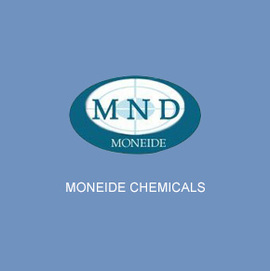모네이드 케미컬스
Tel: 86-315-8309571
WhatsApp/WeChat/Mobile: 0086-15633399667
스카이프: janet-honest
주소: 2-7-523 Jidong Building Materials Tangshan, Hebei 064000 중국
|
화학명 |
Vanillin |
|
다른 이름 |
4-Hydroxy-3-methoxybenzaldehyde |
|
CAS 번호 |
121-33-5 |
|
분자식 |
C8H8O3 |
|
EINECS No. |
204-465-2 |
|
분자량 |
152.14 |
|
분자 구조 |
|
|
세부 |
Appearance: white or yellowish needlelike crystal Assay: 99.5% min. Melting range: 81~83℃ Sulfated ash(as SO4): 0.1% max. Solublity in Ethanol Passes Test Solubllity in sodium hydroxide passes test |
|
주요 응용 프로그램 |
Used in the manufacture of spices, as sweet agent shall. |
Is vanillin the same as vanilla?
Vanillin is not the same as vanilla, though they are closely related. Vanillin is the primary flavor compound (4-hydroxy-3-methoxybenzaldehyde) responsible for vanilla's characteristic aroma, constituting about 2% of natural vanilla extract. Pure vanilla contains hundreds of additional flavor compounds that create its complex profile, while vanillin is a single molecule. Most commercial vanillin is synthetically produced, whereas authentic vanilla comes from cured orchid pods. Though vanillin replicates vanilla's dominant note, it lacks the depth and subtlety of real vanilla.
What is vanillin used for?
Vanillin serves as a versatile flavoring agent in food products like ice cream, baked goods, and chocolates where it provides consistent vanilla flavor at lower cost than natural extract. The pharmaceutical industry uses it to mask bitter tastes in medicines. It's also employed in perfumes, candles, and air fresheners for its warm, sweet aroma. Industrial applications include its use as a chemical intermediate in herbicide production. The compound's antioxidant properties make it valuable in food preservation, while its consistent quality ensures standardized flavoring in mass-produced items.
Is vanillin good or bad for you?
Vanillin is generally recognized as safe (GRAS) by food regulatory agencies when consumed in normal amounts. Some studies suggest potential antioxidant benefits, though these effects require further research. Rare cases of allergic contact dermatitis have been reported in sensitive individuals. While excessive consumption of any flavoring is discouraged, vanillin poses minimal health risks at typical dietary levels. Synthetic vanillin may lack potential beneficial compounds found in natural vanilla, but it doesn't contain harmful additives when produced properly. Moderate use in foods is considered safe for most people.
Is vanillin an artificial flavor?
Vanillin can be both natural and artificial. Naturally occurring vanillin is extracted from vanilla beans, while most commercial vanillin is synthetically produced from lignin or guaiacol. The molecular structure is identical regardless of source, but regulatory agencies require labeling to distinguish natural from artificial versions. "Natural vanillin" may also be produced through biotechnological fermentation. Though functionally similar, artificial vanillin lacks the complex secondary compounds of real vanilla. The synthetic version dominates the market due to its cost-effectiveness and consistent quality compared to natural vanilla cultivation.


























